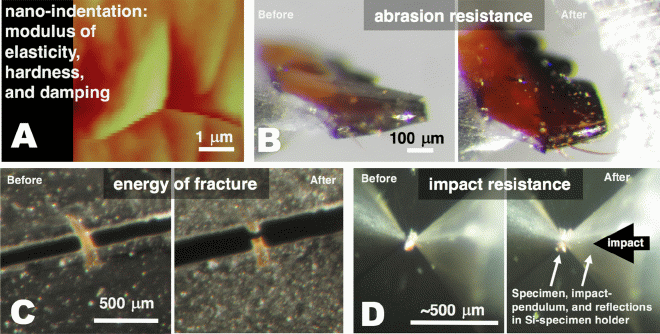Scientists found out the secret of ant’s strong jaws
Scientists found out the secret of ant's strong jaws
A team of biophysicists from the University of Oregon (USA) has uncovered the secret of how ants’ chitin jaws acquire their enviable strength. Chitin is hard on its own, but when additional compounds are added, its strength increases many times over. For example, calcium carbonate is addition to the shells of lobsters and crabs.
Ants, despite their tiny size, are capable of biting creatures much larger than them, such as humans, very painfully. They can also easily grind wood and other hard materials – such tasks require very strong tools that do not wear out over time. As American scientists found out, the secret is the addition of 8% zinc to chitin.

Using an ion-beam microscope, the researchers studied the atomic structure of the ant’s jaws and saw that zinc atoms were located throughout their volume. They are not accumulated in the form of nodules, as previously thought, but are distributed evenly. This allows the ants to pierce materials using only 60% of the force that would be required with a human tooth counterpart. And chitin retains a certain flexibility and does not become brittle like other strong materials.